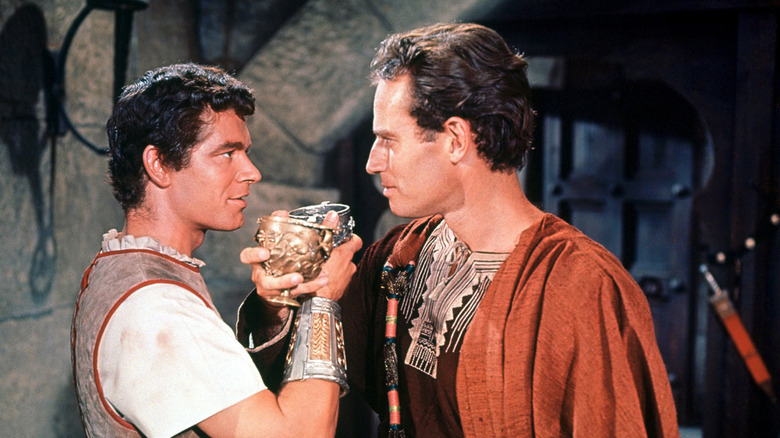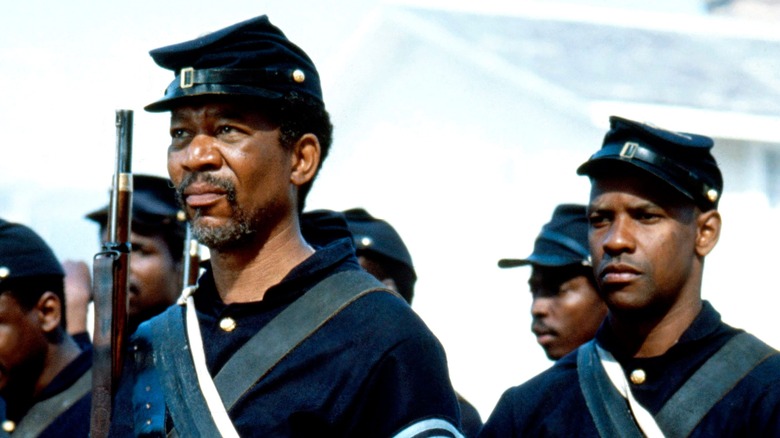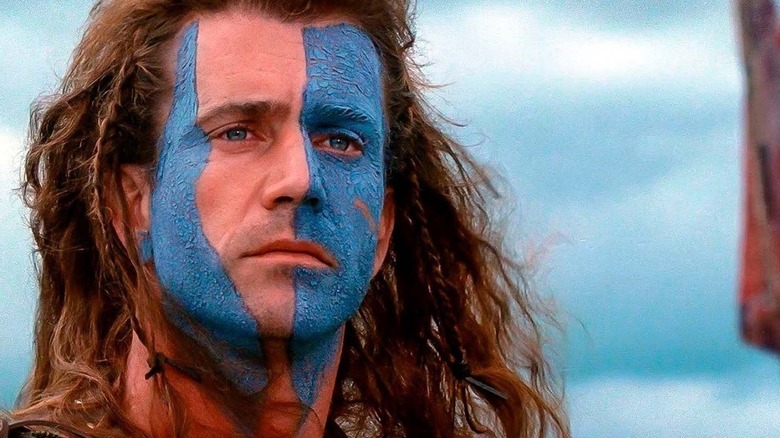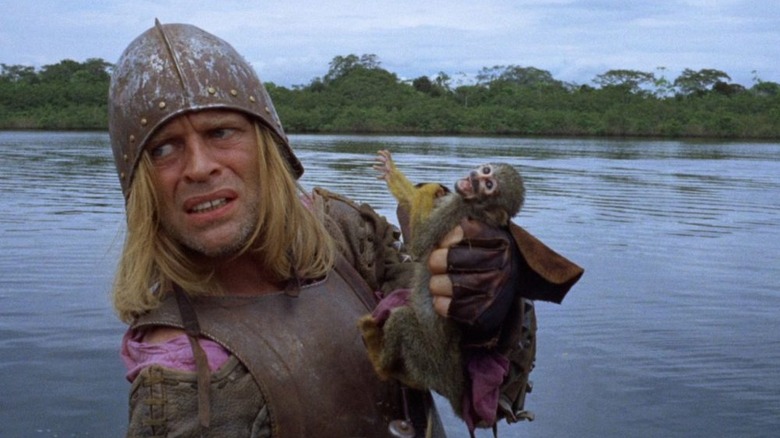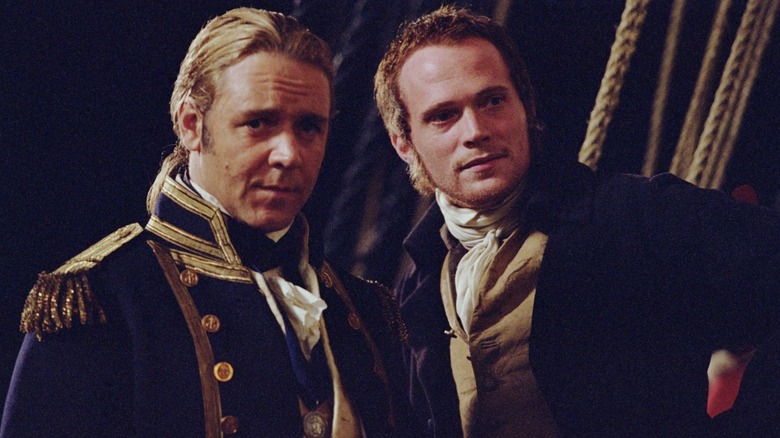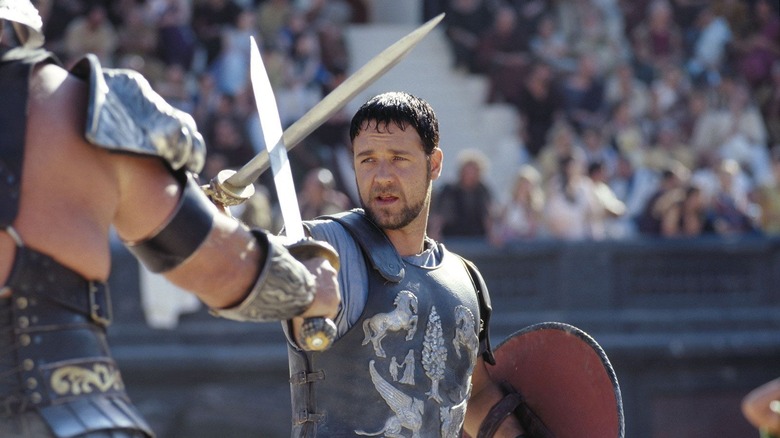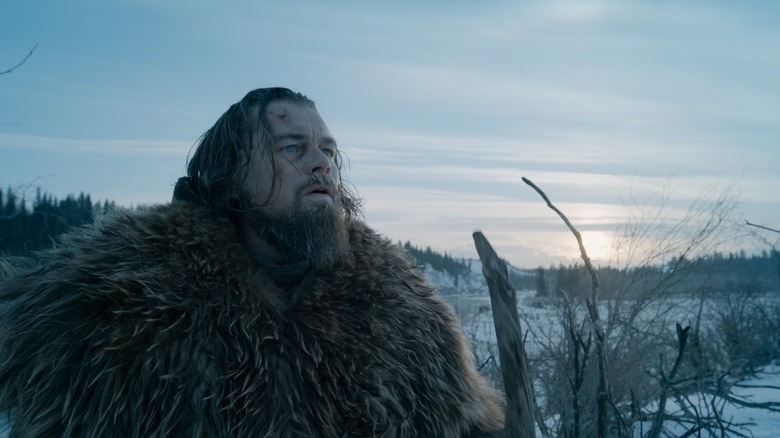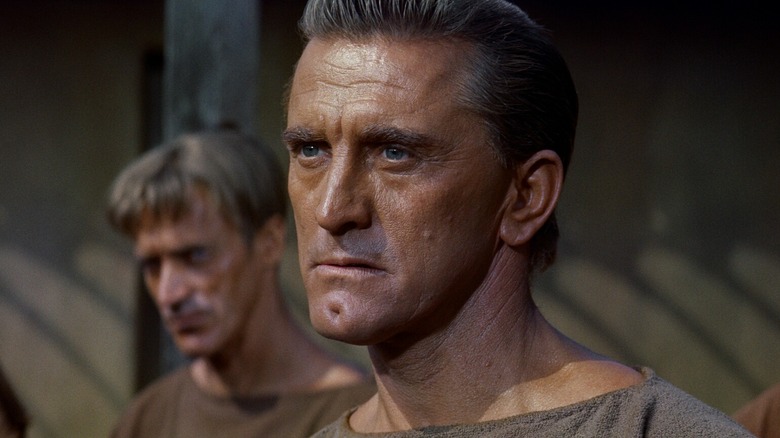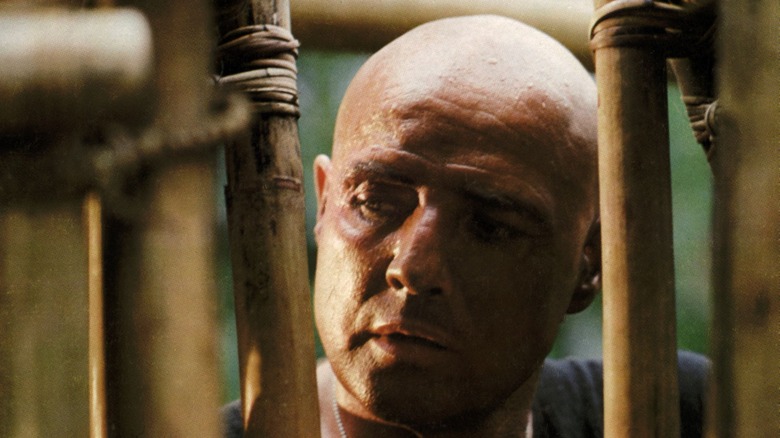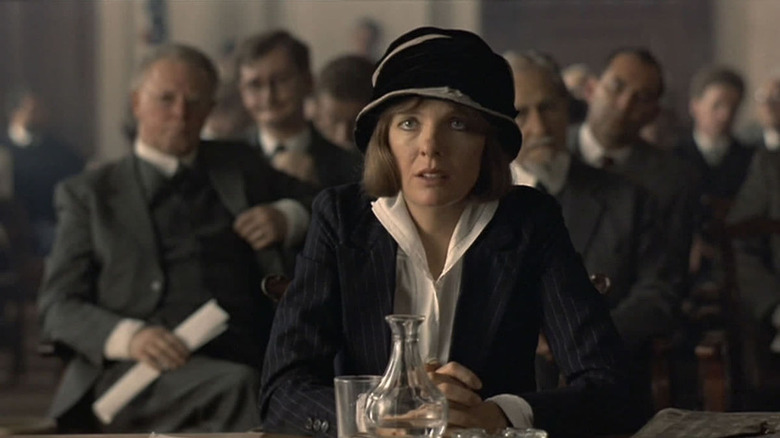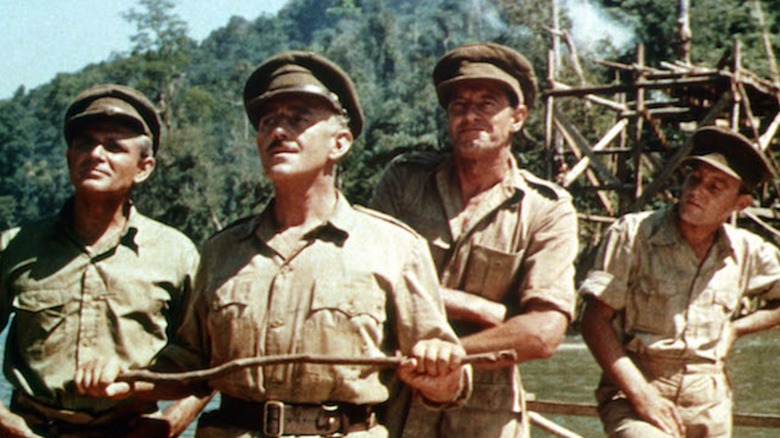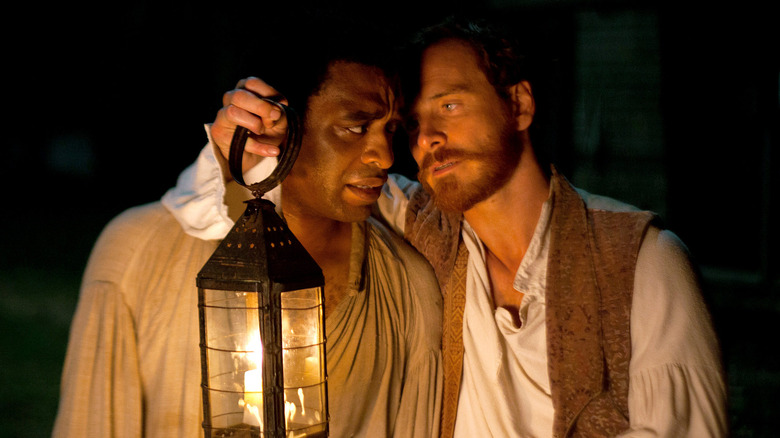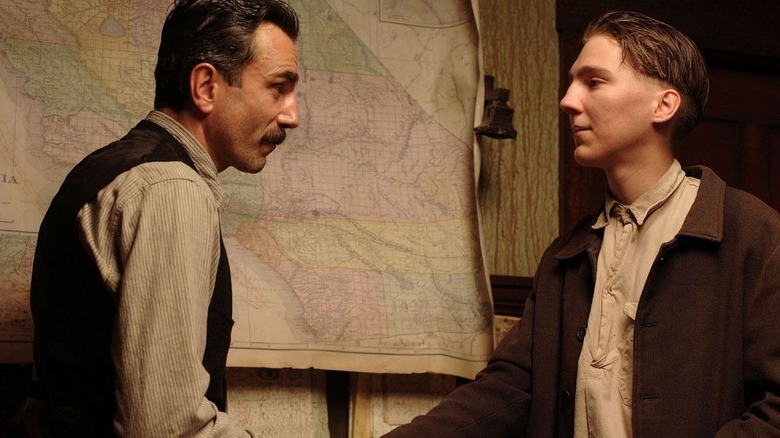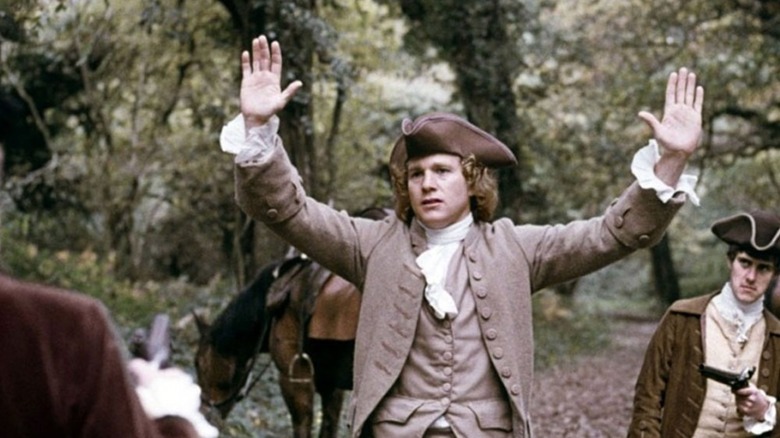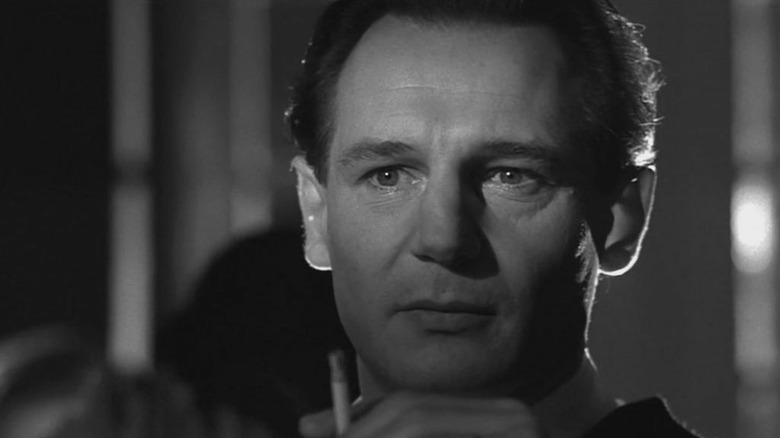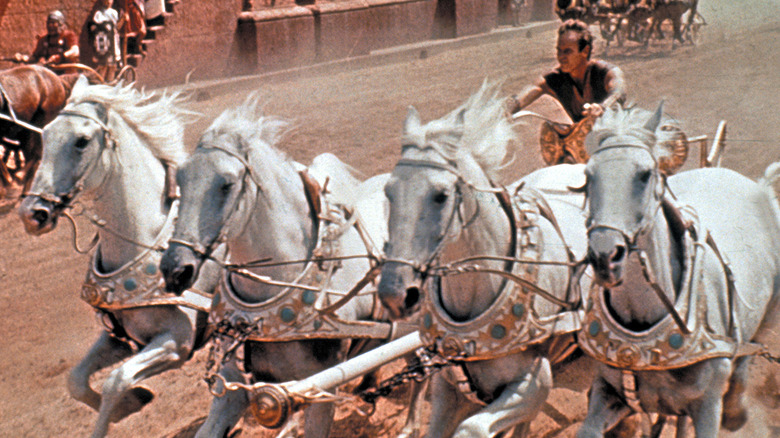The 15 Best Historical Epic Movies Ranked
Even the most imaginative screenwriter can't create stories that rival real historical events. Hollywood often looks to history as an inspiration for its grandest narratives.
The word "epic" can occasionally leave the wrong impression. Any film that tells an extended story over a long period fits within the parameters of an "epic film." While the genre is often associated with action and adventure, epic films can be tragedies, comedies, satires, or even cautionary tales. It can be challenging to pack a film with enough detail to justify the length of an epic, but history has more than enough material to fill in the blanks.
Cinema is a great tool for unlocking the past. The legendary film critic Roger Ebert once said that "the movies are a machine that generates empathy." Whether they are spotlighting an underrepresented group or exploring a critical turning point in history, epic films can be quite instructive. They can also spark interest among young viewers. How many teenage boys began researching the Roman Empire because of Zack Snyder's "300?"
Here's our ranking of the 15 greatest historical epic movies ever made.
15. Glory
"Glory" is not a perfect film. It tells an important story about African American heroism during the Civil War but centers the narrative on white characters. While the film would have been stronger if it showed the Black perspective, it's still a rousing epic. "Glory" shows the incredible valor of the Union Army's first Black regiment. These men fought for a country that refused to fight for them.
Colonel Robert Gould Shaw (Matthew Broderick) is given command of the 54th Massachusetts Infantry Regiment. The Black soldiers refuse to accept honorable discharges, even after the Confederacy announces that all Black soldiers that are captured will be sold into slavery. Sergeant Major John Rawlins (Morgan Freeman) works with Shaw to lead the men into battle, but Private Silas Trip (Denzel Washington) protests against their unequal treatment. Trip opens Shaw's eyes to the suffering that the regiment has endured. Shaw, Rawlins, and Trip work together to lead a courageous attack on a Confederate stronghold at Charleston Harbor.
14. Braveheart
There is a limit to how much violence is appropriate to show on-screen. Epic films can feel exploitative if they glorify graphic material, but the shocking violence in Mel Gibson's 1995 epic, "Braveheart," is justified. The film depicts a real historical tragedy. Some of the most disturbing moments had to be cut so the film would not be rated NC-17. The film depicts the suffering of the Scottish under English rule and shows why they were inspired to rebel. Gibson showed how the revolutionary leader William Wallace became a savior to his people.
After studying in England, Wallace returns to his Scottish homeland and falls in love with his childhood crush, Murron MacClannough (Catherine McCormack). MacClannough is murdered by a squad of soldiers, and in turn, Wallace burns them alive. He becomes a fugitive and raises a rebel army to resist King Edward Longshanks (Patrick McGoohan) and free his people from persecution.
13. Aguirre, The Wrath of God
"Aguirre, The Wrath of God" was not filmed like a classical epic. Director Werner Herzog used minimalist tactics to create a surreal, chaotic war film that captured the feeling of going insane. The film's production was famously troubled. At one point, Herzog even threatened to kill actor Klaus Kinski when he considered dropping out. The unusual inception of the film was worth it. "Aguirre, The Wrath of God" has been heralded as one of the greatest films ever made.
The film takes place during the Spanish conquest of the Amazon jungle at the end of the 16th Century. The conquistador Lope de Aguirre (Kinski) is selected by the mission's leader, Don Pedro de Ursúa (Ruy Guerra), to be his second-in-command. The two begin to clash when they reach the dangerous, exotic locale. Aguirre leads a mutiny against Ursúa and takes control of the soldiers. His obsession with finding a mythic treasure puts them all in danger.
12. Master and Commander: The Far Side of the World
"Master and Commander: The Far Side of the World" is one of the most accurate depictions of naval combat ever seen on-screen. Based on the Aubrey–Maturin series of novels by Patrick O'Brian, the film follows the adventures of Captain Jack Aubrey (Russell Crowe) of the HMS Surprise during the Napoleonic Wars. Although the film was critically acclaimed, it failed at the box office. Fans have been desperate for a sequel ever since.
The film is based on the first three novels in O'Brian's series. Aubrey and his crew are ordered by the British monarchy to track down the elusive French privateer vessel Acheron. Aubrey's men are used to honorable combat, but the tactics of the criminal ship take them off guard. The Surprise is critically damaged after a battle off the coast of Brazil. Aubrey and the ship's surgeon, Stephen Maturin (Paul Bettany), must decide whether they should continue with their mission.
11. Gladiator
"Sword-and-sandals" films were very popular during the Golden Age of Hollywood, but a series of major box office failures in the 1960s caused them to decline. Ridley Scott was able to reinvent the genre in 2000 with his historical epic "Gladiator." Loosely inspired by real events in Roman history, "Gladiator" featured thrilling sequences of armed combat. Although the film had similarities with sword-and-sandals classics like "Spartacus" and "Ben-Hur," Scott had the advantage of an expanded budget and more advanced special effects.
"Gladiator" centers on the relationship between the Roman General Maximus Decimus Meridius (Russell Crowe) and the Emperor Marcus Aurelius (Richard Harris). The Emperor believes that Maximus' military experience has prepared him for leadership, and invites him to serve as the new leader of the Roman Empire. This infuriates the Emperor's son Commodus (Joaquin Phoenix); Commodus kills Maximus' family, and sells him into slavery. Maximus must fight his way through the gladiatorial arenas so he can win his freedom and get revenge on the cruel new Emperor.
10. The Revenant
Alejandro Gonzales Inarritu's epic western "The Revenant" has a much deeper text than most revenge films. Although the film explores the banality of war, it considers how ineffective vengeance is in ending the cycle of violence. Inarritu's ambitious production utilized natural lighting and pushed the film's actors to their physical limits. After years of being snubbed, Leonardo DiCaprio finally won the Academy Award for best actor for his committed performance.
"The Revenant" takes place during the American exploration movement of the early 19th Century. Fur trapper Hugh Glass (DiCaprio) and his companions venture through dangerous territory in the Dakotas. Glass is brutally attacked by a bear and rendered unable to move. He is forced to watch as his son, Hawk (Forrest Goodluck), is murdered by the coward John Fitzgerald (Tom Hardy). Fitzgerald flees, and tells the other trappers that Glass is dead. Glass builds up his strength so he can track down Fitzgerald and kill him.
9. Spartacus
Stanley Kubrick's 1960 epic, "Spartacus," may have been set during the first century, but its themes are still relevant today. The film's screenplay was written by Dalton Trumbo, who had been blacklisted from Hollywood because of his socialist views. Trumbo had to work under a pseudonym for many years just to get work, but the promotional campaign for "Spartacus" proudly displayed his name. The film's success helped end blacklisting in the film industry. Trumbo channeled his frustration into the historical story. "Spartacus" shows the power that rebel movements have to fight against oppression.
"Spartacus" explores a slave revolt against the Roman Empire led by the titular character portrayed by Kirk Douglas. Spartacus is sentenced to death in the gladiatorial arenas, but he emerges from each duel victoriously. He becomes a heroic figure and inspires the other slaves to fight for their freedom. Spartacus leads a revolution against the Roman Senate.
8. Apocalypse Now
The Vietnam War inspired many filmmakers in the New Hollywood movement to comment on the United States' role in the conflict. The war sparked strong reactions from activists, and filmmakers like Francis Ford Coppola captured their frustration. Coppola's 1979 epic, "Apocalypse Now." explores the dehumanizing effects of American imperialism on both soldiers and civilians. Coppola drew inspiration from Joseph Conrad's philosophical novella, "Heart of Darkness," but he changed the story to set it during the Vietnam conflict.
"Apocalypse Now" follows an American military operation to execute the insane U.S. Army Special Forces Colonel Walter E. Kurtz (Marlon Brando). Kurtz was dispatched into the heart of the jungle, but he broke from the Army and formed his own separatist militia. Kurtz is worshiped as a god-like figure by a cult of loyal supporters. U.S. Army Captain Benjamin Willard (Martin Sheen) is dispatched to assassinate Kurtz and prevent his movement from expanding.
7. Reds
"Reds" tells a critical story about the power of journalism and activism. Warren Beatty's biographical film explores the life of John Reed, an American reporter who chronicled the early days of the Communist Revolution against the Czars in Russia. Beatty and his co-writer Trevor Griffiths adapted Reed's memoir "Ten Days That Shook The World," which covered the October Revolution. In the film, Beatty shows how Reed transitions from recording history to being part of it.
Reed (Beatty) begins as a political idealist in the American progressive movement of the 1910s. His impassioned speeches attract the attention of feminist scholar Louise Bryant (Diane Keaton), and the two activists bond over their interest in international affairs. The romance that develops between them gives the film an emotional hook. Reed and Bryant begin to clash after they both have affairs. However, they are reunited during the 1917 Russian Revolution. Reed risks his life when he travels to the blood-stained streets of St. Petersburg to follow the Bolsheviks.
6. The Bridge on the River Kwai
There are many films about World War II, but David Lean's 1957 epic "The Bridge on the River Kwai" is one of the best. The film shows the perspective of prisoners-of-war who are forced into labor by their enemies. Some older war films do not hold up because they ignore the brutality of combat. However, "The Bridge on the River Kwai" was praised by veterans who claimed that the film was accurate to their experiences. "The Bridge on the River Kwai" does not completely lionize the soldiers held in captivity. It shows the diversity within their experiences as they face difficult moral dilemmas.
The film takes place in a Japanese prison camp in Thailand under the control of the ruthless Colonel Saito (Sessue Hayakawa). Saito plans to construct a grand railway bridge that will connect Bangkok and Rangoon. He orders the British prisoners to work on the project and threatens that they will be killed if they disobey his commands. British Colonel Nicholson (Alec Guinness) and U.S. Navy Commander Shears (William Holden) reluctantly comply. Saito and Nicholson gradually grow to respect each other. When a British commando mission led by Major Warden (Jack Hawkins) threatens to destroy the bridge, Nicholson must decide where his loyalties lie.
5. 12 Years a Slave
Any film that approaches the subject of slavery must do so with the utmost sensitivity. It would be impossible for any film to capture the entirety of the experience of enslaved Americans. Every victim has an individual story to tell. Steven McQueen's drama "12 Years a Slave" depicts the grueling personal account of Solomon Northup (Chiwetel Ejiofor), a free musician from Washington, D.C., who is kidnapped and sold into slavery. "12 Years a Slave" is based on Northup's memoir of the same name. It's an extremely difficult film to watch. McQueen does not shy away from showing the graphic nature of Northup's experience, but it would be ignorant to gloss over any details.
Northup is deceived by conmen Merrill Brown (Scoot McNairy) and Abram Hamilton (Taran Killam), who offer him a job playing violin. Northup professes his freedom when he's brought to Theophilus Freeman's (Paul Giamatti) slave auction, but no one believes him. Plantation owner William Ford (Benedict Cumberbatch) purchases Northup but eventually trades him to Edwin Epps (Michael Fassbender). While all slave owners are evil, Epps is truly sadistic. Northup struggles to survive over 12 long years. The possibility of seeing his family again feels very distant to him. "I don't want to survive," he says. "I want to live."
4. There Will Be Blood
"There Will Be Blood" examines themes of greed, obsession, and corruption within the context of the Western genre. Paul Thomas Anderson's historical epic shows how the Southern California oil boom at the dawn of the 20th century effectively brought an end to the ranching lifestyle and sparked a new era of Industrialism. This dramatic shift in the American economic ecosystem is seen through the eyes of the cruel investor Daniel Plainview (Daniel Day-Lewis). Day-Lewis delivers one of the most mesmerizing performances in the history of cinema.
Plainview is a silver miner searching for work after he's injured at his job in New Mexico. In an accident at a California drilling factory, one of his coworkers is killed. Plainview decides to raise the man's orphaned son, H.W. (Dillon Freasier), as his own. He has no empathy for the boy. Plainview suspects that having a child will make him seem more sympathetic when he makes business proposals.
H.W. travels with his adopted father to an oil deposit in Little Boston, California, that is owned by Paul Sunday (Paul Dano). Plainview deceives Paul into letting him use the deposit and meets his identical brother Eli. Eli is the local preacher and is very popular in the community. As Plainview begins his operation, Eli attempts to convert him to Christianity. Plainview becomes obsessed with growing his empire and breaking Eli's spirit. He gradually descends into madness.
3. Barry Lyndon
Although "Spartacus" is a traditional sword-and-sandal epic, Stanley Kubrick's next period film, "Barry Lyndon," is much more subversive. Instead of telling an inspirational story of heroism, Kubrick decided to dedicate three hours to one of the most unlikeable protagonists in film history. Ryan O'Neal's titular Irish rogue is a serial womanizer, cheater, and murderer. It was asking a lot for audiences to invest so much time in a cruel man, but "Barry Lyndon" is a fascinating character study.
"Barry Lyndon" is divided into two segments: The first half is titled "By What Means Redmond Barry Acquired the Style and Title of Barry Lyndon" and explores the character's upbringing. Barry's father is killed in a duel, leaving his widowed mother to raise him by herself. As he grows up, Barry falls deeply in love with his older cousin, Nora Brady (Gay Hamilton). Nora's parents force her to marry Captain John Quin (Leonard Rossiter) of the British Army. Barry challenges Quin to a duel for her hand. Barry is victorious but has to flee Ireland when the military comes to arrest him.
The second half of the film is titled "Containing an Account of the Misfortunes and Disasters Which Befell Barry Lyndon." It picks up with Barry after he has cheated his way into a position of power. Barry's fate plays out comically. His son, Charles (Frank Middlemass), grows to despise him. Charles challenges his father to a duel and slays him.
2. Schindler's List
Hollywood has been hesitant to develop films about the Holocaust. A sensationalized or inaccurate depiction of a tragedy can be seen as disrespectful, and any story about the Holocaust should be told by a Jewish artist. Steven Spielberg himself was nervous about taking on the sensitive material. Spielberg decided to wait until he felt that he was "mature enough" to make "Schindler's List."
"Schindler's List" tells the inspirational story of Oskar Schindler (Liam Neeson), a German businessman who used his resources to rescue Jews during World War II. Over a thousand families owe their lives to Schindler. During the film's moving final moments, the survivors and descendants lay flowers on the real Schindler's grave. The film shows Schindler's bravery, but it does not ignore his initial ties to the Nazis. In a moving moment towards the film's conclusion, Schindler (Liam Neeson) reflects on all the other lives he could have saved if he had given up a few more luxuries.
Nothing about the film is melodramatic, and the sequences that depict the suffering of Jews are appropriately disturbing. Enemy commander Amon Göth (Ralph Fiennes) doesn't seem like an over-the-top villain. He's terrifying because he is a real historical monster. "Schindler's List" isn't an easy watch, but it's an essential one.
1. Ben-Hur
There are few moments in the history of cinema that are as iconic as the chariot race from 1959's "Ben-Hur." Shot over five weeks, the sequence employed over 7,000 extras and cost MGM $1 million to create. It's a thrilling set-piece that still holds up today, and there are only a few historical epic films that have matched the scale of "Ben-Hur." However, William Wyler's 1959 classic isn't just pure spectacle. It is an intimate story about a man who loses everything and must fight to regain his title, dignity, and family.
"Ben-Hur" takes place in A.D. 26 in the holy city of Jerusalem. Jewish prince Judah Ben-Hur (Charlton Heston) welcomes his childhood friend, Commander Messala (Stephen Boyd), to his palace, and the two men enjoy catching up. However, Ben-Hur discovers a fundamental difference between the two. While Ben-Hur is invested in protecting the Jewish people from persecution, Messala is a devout imperialist. The Roman Empire has persecuted Jews, and Messala suspects that Ben-Hur could lead an uprising against his military forces. He betrays his former companion and sells Ben-Hur into slavery.
Messala is a ruthless villain, but Boyd shows his genuine empathy for Ben-Hur. Modern scholars have analyzed the film's gay subtext that audiences in the 1950s may not have picked up on.
